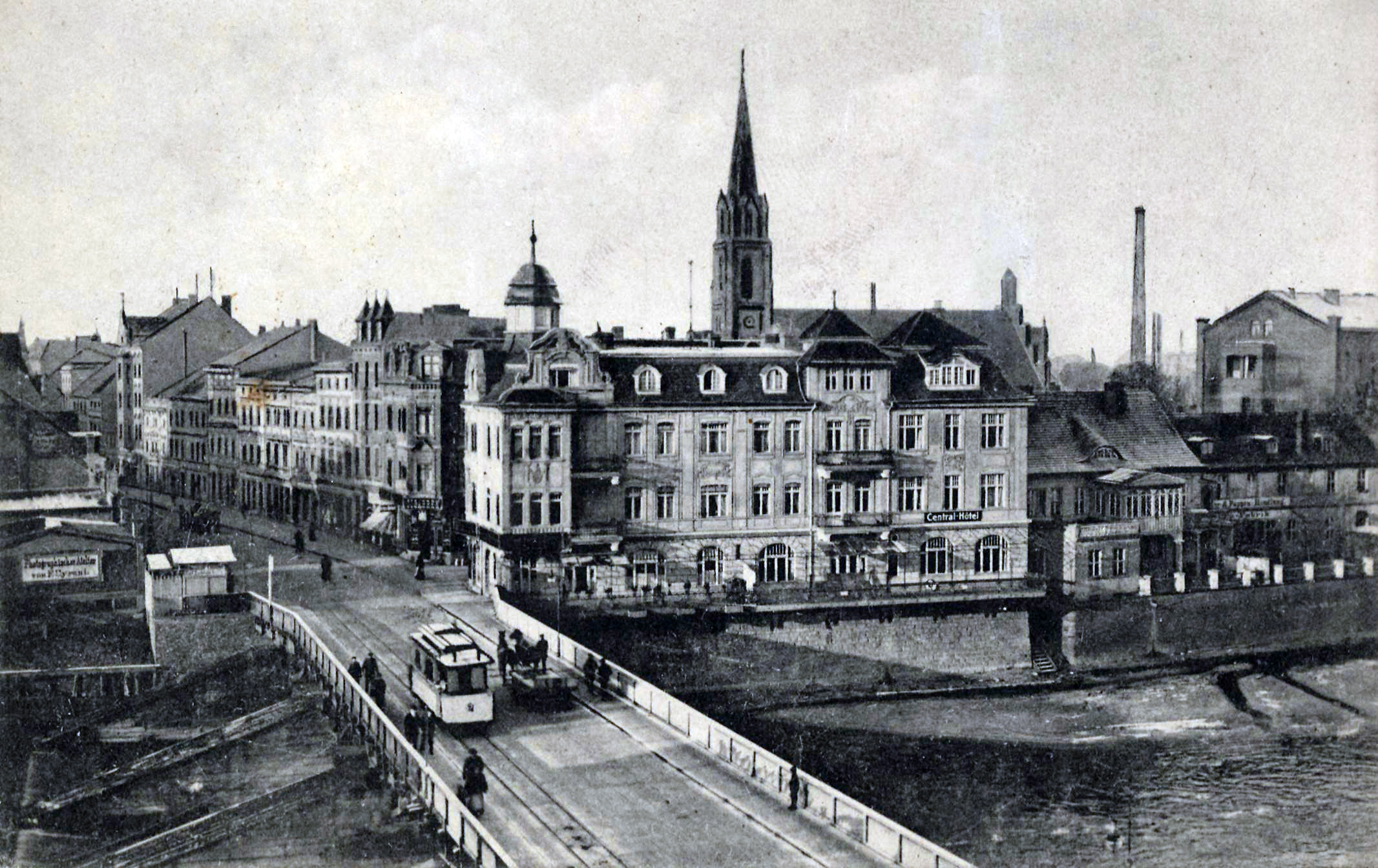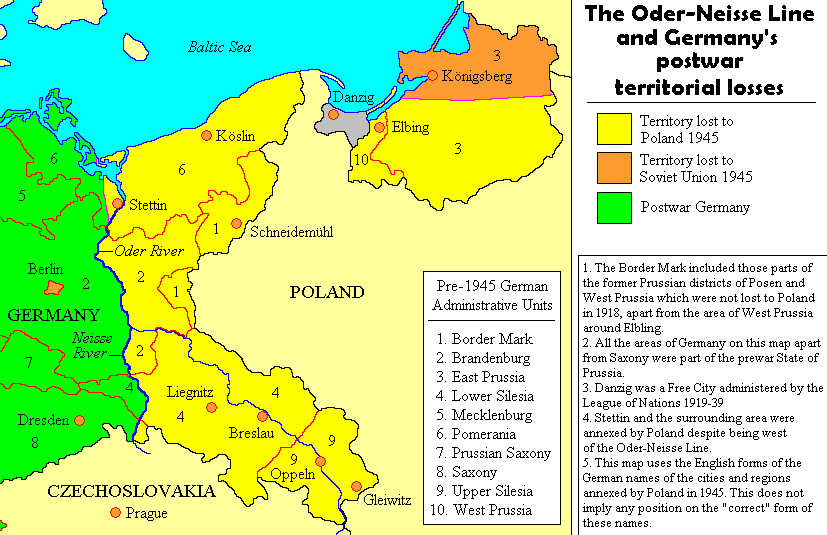|
Guben
Guben ( Polish and Sorbian: ''Gubin'') is a town on the Lusatian Neisse river in Lower Lusatia, in the state of Brandenburg, Germany. Located in the Spree-Neiße district, Guben has a population of 20,049. Along with Frankfurt (Oder) and Görlitz, Guben is a divided city on the border between Germany and Poland, having been separated into Guben and Gubin in 1945 by the Oder–Neisse line. Geography Environment Guben is located in the district (Landkreis) of Spree-Neiße in the southeast of the state of Brandenburg. It is in the historical region of Lower Lusatia. Guben's position on the banks of the Lusatian Neisse between two plateaus was advantageous in its early economic development. These plateaus developed from ground moraines of the Wisconsin glaciation period. Both the western (''Kaltenborner Berge'' = Kaltenborn Hills) and eastern (''Gubener Berge'' = Guben Hills) ended up as terminal moraines. The surrounding land is covered with pine forests and lakes. ... [...More Info...] [...Related Items...] OR: [Wikipedia] [Google] [Baidu] |
Gubin, Poland
Gubin (german: Guben) is a town in Krosno Odrzańskie County, Lubusz Voivodeship, in western Poland. It is the administrative seat of the rural Gmina Gubin, though not part of it. Gubin is on the right bank of the Lusatian Neisse river, at the border with Germany. The rail and road border crossings are connected with the German town of Guben, of which Gubin was the central and eastern part until the division of the city by the Oder–Neisse line in 1945. Geography Gubin is situated in the Polish part of the historic Lower Lusatia region, at the confluence of the Neisse and Lubsza rivers. It is located on the national road 32 operating as an orbital road for Gubin. It starts at the border crossing with Guben, runs to Krosno Odrzańskie and the regional capital Zielona Góra, and further leads to the national road 5 that connects Wrocław and Poznań. Gubin also has a railway border crossing on the line from Guben to Zbąszyń. The municipal area of Gubin comprises 20.68 k ... [...More Info...] [...Related Items...] OR: [Wikipedia] [Google] [Baidu] |
Spree-Neiße
Spree-Neiße ( dsb, Wokrejs Sprjewja-Nysa) is a ''Kreis'' (district) in the southern part of Brandenburg, Germany. Neighboring districts are (from the south clockwise) the districts Niederschlesischer Oberlausitzkreis and Kamenz in Saxony, the districts Oberspreewald-Lausitz, Dahme-Spreewald and Oder-Spree. The district-free city Cottbus is surrounded by the district. To the east is Poland. Geography The district is located in the region of Lusatia. The Spree river runs through the district, while the Lusatian Neisse river forms the eastern border, which is at the same time the border of Poland. History The district was created in 1993 by merging the previous districts Cottbus-Land, Forst, Guben and Spremberg. Coat of arms The coat of arms shows four fields each representing one of the previous districts. The crayfish in the topleft symbolizes Cottbus-Land, and is also present in the coat of arms of the city of Cottbus. The lion in the topright is the symbol of the Kingd ... [...More Info...] [...Related Items...] OR: [Wikipedia] [Google] [Baidu] |
Divided Cities
A divided city is one which, as a consequence of political changes or border shifts, currently constitutes (or once constituted) two separate entities, or an urban area with a border running through it. Listed below are the localities and the state they belonged to at the time of division. Especially notable examples of divided cities are divided capitals, including Nicosia (since 1974, ongoing), Jerusalem (1948–1967 ''de jure''; ongoing since 1948), and Berlin (1949–1990). Former cities now divided * Akçakale, divided along the Baghdad Railway under the Treaty of Ankara in 1921 ** Tell Abyad, Syria ** Akçakale, Turkey * Arappınar, divided along the Baghdad Railway under the Treaty of Ankara in 1921 ** Kobanî, Syria ** Mürşitpınar, Turkey *Astara, divided under the Treaty of Turkmenchay (1828) **Astara, Azerbaijan **Astara, Iran * Baarle, divided since 1194, modern NL–BE division since 1831 ** Baarle-Nassau, Netherlands ** Baarle-Hertog, Belgium * Bad Muskau, G ... [...More Info...] [...Related Items...] OR: [Wikipedia] [Google] [Baidu] |
Lusatian Neisse
The Lusatian Neisse (german: Lausitzer Neiße; pl, Nysa Łużycka; cs, Lužická Nisa; Upper Sorbian: ''Łužiska Nysa''; Lower Sorbian: ''Łužyska Nysa''), or Western Neisse, is a river in northern Central Europe.''Neisse River'' at www.britannica.com. Retrieved 4 Feb 2011. at http://eagri.cz/public. Retrieved 4 Feb 2011. It rises in the Jizera Mountains, near Nová Ves nad Nisou, at the [...More Info...] [...Related Items...] OR: [Wikipedia] [Google] [Baidu] |
Poznań
Poznań () is a city on the River Warta in west-central Poland, within the Greater Poland region. The city is an important cultural and business centre, and one of Poland's most populous regions with many regional customs such as Saint John's Fair (''Jarmark Świętojański''), traditional Saint Martin's croissants and a local dialect. Among its most important heritage sites are the Renaissance Old Town, Town Hall and Gothic Cathedral. Poznań is the fifth-largest and one of the oldest cities in Poland. As of 2021, the city's population is 529,410, while the Poznań metropolitan area (''Metropolia Poznań'') comprising Poznań County and several other communities is inhabited by over 1.1 million people. It is one of four historical capitals of medieval Poland and the ancient capital of the Greater Poland region, currently the administrative capital of the province called Greater Poland Voivodeship. Poznań is a center of trade, sports, education, technology a ... [...More Info...] [...Related Items...] OR: [Wikipedia] [Google] [Baidu] |
Lusatia
Lusatia (german: Lausitz, pl, Łużyce, hsb, Łužica, dsb, Łužyca, cs, Lužice, la, Lusatia, rarely also referred to as Sorbia) is a historical region in Central Europe, split between Germany and Poland. Lusatia stretches from the Bóbr and Kwisa rivers in the east to the Pulsnitz and Black Elster rivers in the west, and is located within the German states of Saxony and Brandenburg as well as in the Polish voivodeships of Lower Silesia and Lubusz. Lusatia's central rivers are the Spree and the Lusatian Neisse, which constitutes the border between Germany and Poland since 1945 (Oder–Neisse line). The Lusatian Mountains (part of the Sudetes), separate Lusatia from Bohemia (Czech Republic) in the south. Lusatia is traditionally divided into Upper Lusatia (the hilly southern part) and Lower Lusatia (the flat northern part). The areas east and west along the Spree in the German part of Lusatia are home to the Slavic Sorbs, one of Germany's four officially recognized ind ... [...More Info...] [...Related Items...] OR: [Wikipedia] [Google] [Baidu] |
Lower Lusatia
Lower Lusatia (; ; ; szl, Dolnŏ Łużyca; ; ) is a historical region in Central Europe, stretching from the southeast of the German state of Brandenburg to the southwest of Lubusz Voivodeship in Poland. Like adjacent Upper Lusatia in the south, Lower Lusatia is a settlement area of the West Slavic Sorbs whose endangered Lower Sorbian language is related to Upper Sorbian and Polish. Geography This sparsely inhabited area within the North European Plain (Northern Lowland) is characterised by extended pine forests, heathlands and meadows. In the north it is confined by the middle Spree River with Lake Schwielochsee and its eastern continuation across the Oder at Fürstenberg to Chlebowo. In the glacial valley between Lübben and Cottbus, the Spree River branches out into the Spreewald ("Spree Woods") riparian forest. Other rivers include the Berste and Oelse tributaries as well as the Schlaube and the Oder–Spree Canal opened in 1891. In the east, the Bóbr River f ... [...More Info...] [...Related Items...] OR: [Wikipedia] [Google] [Baidu] |
Oder–Neisse Line
The Oder–Neisse line (german: Oder-Neiße-Grenze, pl, granica na Odrze i Nysie Łużyckiej) is the basis of most of the international border between Germany and Poland from 1990. It runs mainly along the Oder and Lusatian Neisse rivers and meets the Baltic Sea in the north, just west of the ports of Szczecin and Świnoujście (German: ''Stettin'' and ''Swinemünde''). All prewar German territories east of the line and within the 1937 German boundaries—comprising nearly one quarter (23.8 percent) of the Weimar Republic—were ceded under the changes decided at the postwar Potsdam Conference (Potsdam Agreement), with the greatest part becoming part of Poland. The remainder, consisting of northern East Prussia with the German city of Königsberg (renamed Kaliningrad), was allocated to the Soviet Union, as the Kaliningrad Oblast of the Russian SFSR (today Russia). However this did not become completely official until the peace treaty for Germany was signed. The ethnic Germ ... [...More Info...] [...Related Items...] OR: [Wikipedia] [Google] [Baidu] |
Kingdom Of Bohemia
The Kingdom of Bohemia ( cs, České království),; la, link=no, Regnum Bohemiae sometimes in English literature referred to as the Czech Kingdom, was a medieval and early modern monarchy in Central Europe, the predecessor of the modern Czech Republic. It was an Imperial State in the Holy Roman Empire, and the Bohemian king was a prince-elector of the empire. The kings of Bohemia, besides the region of Bohemia proper itself, also ruled other lands belonging to the Bohemian Crown, which at various times included Moravia, Silesia, Lusatia, and parts of Saxony, Brandenburg, and Bavaria. The kingdom was established by the Přemyslid dynasty in the 12th century from the Duchy of Bohemia, later ruled by the House of Luxembourg, the Jagiellonian dynasty, and from 1526 the House of Habsburg and its successor, the House of Habsburg-Lorraine. Numerous kings of Bohemia were also elected Holy Roman Emperors, and the capital, Prague, was the imperial seat in the late 14th century, ... [...More Info...] [...Related Items...] OR: [Wikipedia] [Google] [Baidu] |
Coat Of Arms Of Saxony
The coat of arms of the present-day German free state of Saxony shows a tenfold horizontally-partitioned (''Barry of ten'') field of black (''sable'') and gold/yellow ('' or'') stripes,Freistaat Sachsen official website Accessed 2009-05-19. charged with a green ('''') crancelin (a stylized common rue) running from the viewer's top-left to bottom-right (''in bend''). Although the crancelin is sometimes show ... [...More Info...] [...Related Items...] OR: [Wikipedia] [Google] [Baidu] |
Ortsteil
A village is a clustered human settlement or community, larger than a hamlet but smaller than a town (although the word is often used to describe both hamlets and smaller towns), with a population typically ranging from a few hundred to a few thousand. Though villages are often located in rural areas, the term urban village is also applied to certain urban neighborhoods. Villages are normally permanent, with fixed dwellings; however, transient villages can occur. Further, the dwellings of a village are fairly close to one another, not scattered broadly over the landscape, as a dispersed settlement. In the past, villages were a usual form of community for societies that practice subsistence agriculture, and also for some non-agricultural societies. In Great Britain, a hamlet earned the right to be called a village when it built a church. [...More Info...] [...Related Items...] OR: [Wikipedia] [Google] [Baidu] |
Coat Of Arms Of Poland
The coat of arms of Poland is a white, crowned eagle with a golden beak and talons, on a red background. In Poland, the coat of arms as a whole is referred to as ''godło'' both in official documents and colloquial speech, despite the fact that other coats of arms are usually called a ''herb'' (e.g. the Nałęcz ''herb'' or the coat of arms of Finland). This stems from the fact that in Polish heraldry, the word ''godło'' (plural: ''godła'') means only a heraldic charge (in this particular case a white crowned eagle) and not an entire coat of arms, but it is also an archaic word for a national symbol of any sort. In later legislation only the ''herb'' retained this designation; it is unknown why. Legal basis The coat of arms of the Republic of Poland is described in two legal documents: the Constitution of the Republic of Poland of 1997">/nowiknowiki>/nowiki>, Dz.U. 1997 nr 78 poz. 483 and the Coat of Arms, Colors and Anthem of the Republic of Poland, and State Seals Act ... [...More Info...] [...Related Items...] OR: [Wikipedia] [Google] [Baidu] |




_Tafel_03.png)
